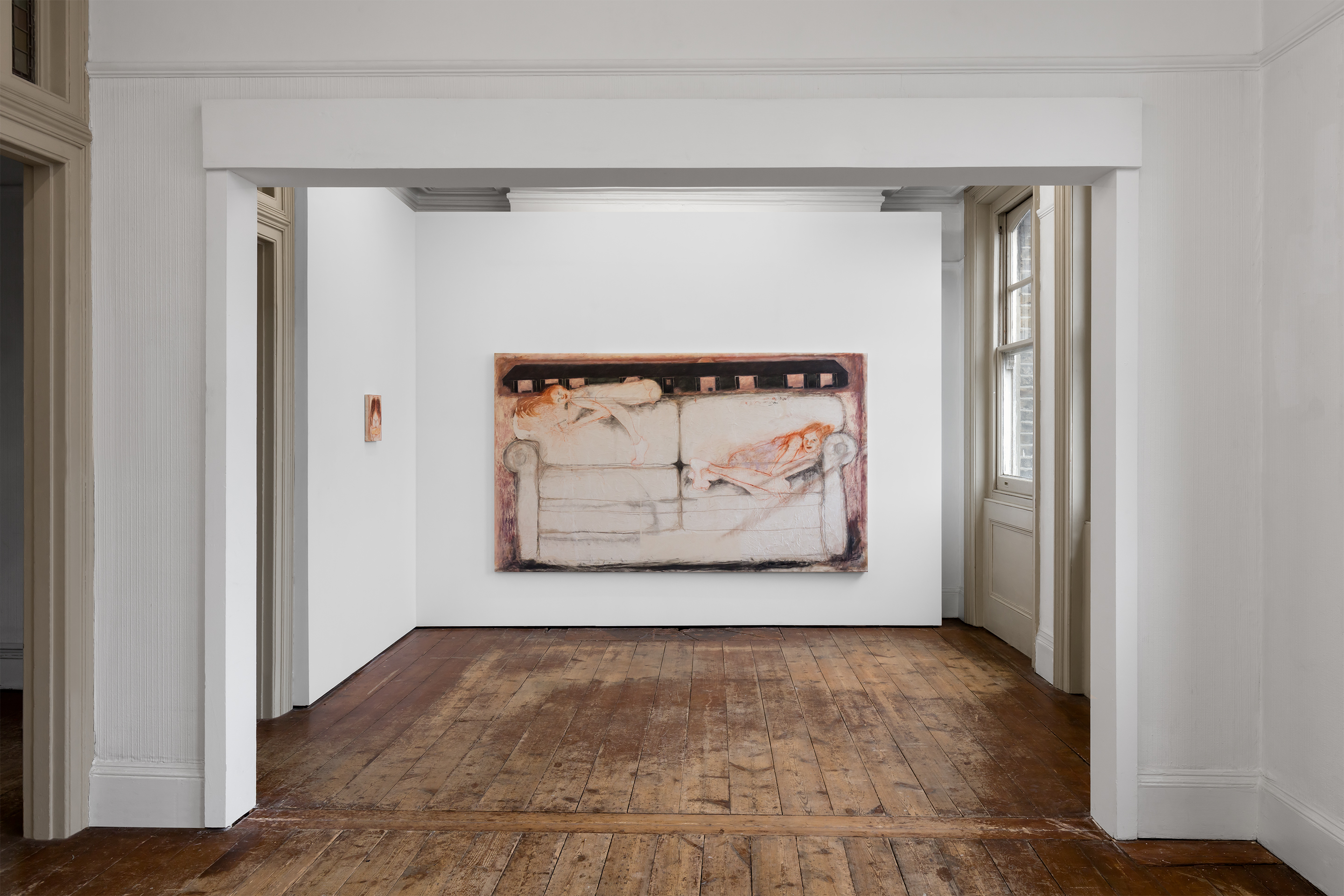


Image courtesy of Brunette Coleman, London. Photography by Jack Elliot Edwards.
Brunette Coleman
4 October–9 November 2024
Counter to the prevailing nervousness about the current state of the art market, London has seen a flowering of new galleries in the last three years. From Clerkenwell to Smithfield, Bethnal Green and Hackney there is a concentration of new spaces opened by enterprising young gallerists requiring our attention. Some of them are also to be found at Frieze London, others at the Minor Attractions fair at the Mandrake Hotel in Fitzrovia. It seems there is a new spirit abroad: one that is more collaborative, more diverse and more entrepreneurial than we have seen in a long time.
Brunette Coleman gallery is a case in point. Founded by Ted Targett and Anna Eaves just one year ago, the gallery focuses on providing emerging international artists a debut show in London. Emma Rose Schwartz has been included in a couple of group shows at the gallery, but this is her first solo show in the UK. Hung across two rooms on the second floor of this Georgian building, the eight paintings here include elements that echo Schwartz’s earlier works. The ethereal, red-headed girls that are avatars, or ‘fractals’ of the artist, and the long, low agricultural buildings that were part of her familiar landscape growing up in the American south.
TV Sunrise, 2024 is the largest work in the show. A vast white sofa fills the rectangle of the canvas. Two kittenish adolescent girls nestle on it, their flame-coloured hair spread out around them, their gaze intent, as if watching TV. Behind the sofa, a dark outbuilding spans the width of the picture. The brooding black of the building connects with the shadows at the foot of the sofa and with the cleft between the sofa’s cushions that suggests creases in flesh. Schwartz’s work is also characterised by a very minimal pallete of colours: black white and auburn. The softness of the pale girls on their pale sofa contrasts with the sharp geometries of the architecture. The mood is one of lassitude combined with incipient eroticism.
The delicacy and lightness of Schwartz’s line continue through works such as Fortunate Relative, Certain Planet and Oddly Sweet, but with Out Front there is a distinct shift. The same low structure runs across the top of the canvas, this time with dimly lit windows. Below it, an indistinct, pale band hovers – beneath which a girl’s head emerges from a hazy, blood-red form. The girl’s expression is unreadable. Her body is completely enveloped with only a suggestion of her shoulders being inside a robe of some sort. All around her is blackness. The effect is cinematic. One is put in mind of Edvard Munch or Dorothea Tanning’s other-worldly adolescents, but the bands of hazy pigment also conjure up shades of Mark Rothko’s abstractions. In Middle Creek the figure disappears, and the polarities are reversed: a black band bisects the picture plane about two thirds up the canvas, and the buildings are rendered sketchily in black against white. Schwartz’s technique is to overlay paper on top of her canvas. Painting first onto the canvas then on top of the paper, which wrinkles in the process, there is a material sense of fragility in the way each image is worked and reworked. Schwartz does not use a paintbrush but applies paint straight to the surface of the canvas from her hands. The canvases stay pinned to the wall of her studio until she has finished them, and only then are they ‘contained’ on a stretcher. Mortality is implied by the fact of a work being completed.
The title of the exhibition is taken from perhaps the most incongruous work in the show. Old Mortality shows a large and peaceable black and white cow, its square frame pressing out to the sides of the canvas. Behind it, the regular verticals of ranch fencing punctuate a suggestion of remembered landscape. Born in Canada but having spent part of her childhood in Nashville, Schwartz now lives and works in New York. There is not much that is romantic about her evocation of rural life – it is more eery than that. Yet there is still affection and nostalgia perhaps, for the version of herself that lived that life.
Caroline Douglas, Director of CAS
Old Mortality: Emma Rose Schwartz
4 October–9 November 2024. Gallery opening hours: Thursday–Saturday
12–6pm